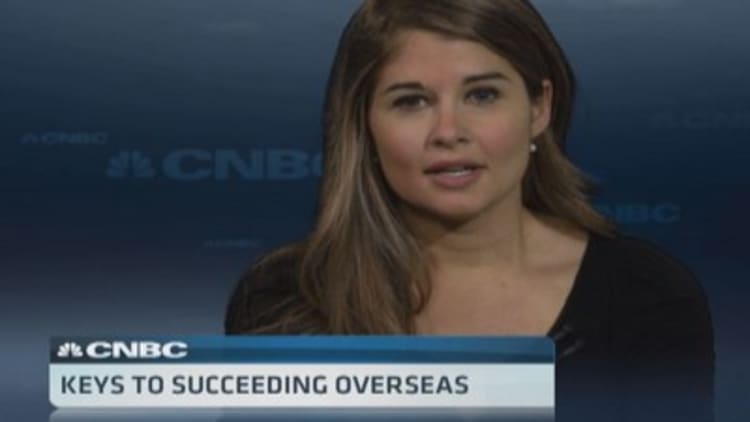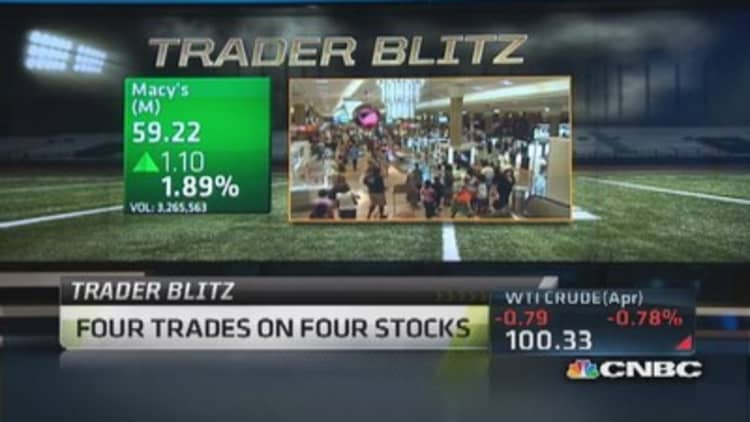Retailers setting up operations in Canada are quickly learning it isn't as easy as packing a bag and heading north.
Take Target, for instance.
The discount retailer, which has a strong following of cross-border Canadian shoppers, stumbled on its entry into the country last year, with experts citing missteps in product assortment, pricing, supply chain and real estate.
But as luxury department stores Nordstrom and Saks prepare for their entry into the market, experts said they have one innate advantage over Target—while the Canadian discount sector is over-penetrated by American competitors Wal-Mart and Costco, the luxury space still has room to grow.
(Read more: From 5th Ave. to Oxford Street, retail's global problem)
"I think that there is white space still in Canada for higher-end apparel," said Deutsche Bank analyst Paul Trussell.
A false sense of security
Major retailers such as Gap and Wal-Mart began entering Canada around the 1990s. Following the recession, the influx of U.S. companies increased, said Antony Karabus, president of Hilco Retail Consulting.
They were drawn to Canada because the country's economy wasn't hit as hard by the financial crisis, and because the lack of language barrier made them feel the move wasn't international, Karabus said. But several companies underestimated the nuances that accompany the Canadian market, causing retailers from Big Lots to J. Crew to stub their toes over the years.
Even though it's right next door, the country operates under substantially different government regulations, a different supply chain, and different rules regarding employee benefits, said Alison Paul, vice chairman and U.S. retail and distribution leader at Deloitte.
(Read more: This big-name retailer now accepts bitcoin)
Retailers have also run into trouble by passing off higher prices to savvy Canadian shoppers, who quickly realize the items in their shopping cart are costlier than in the U.S.
"I think one of the things about Canada is that in the U.S., we tend to treat them like our next-door neighbor and like they're an extension of our economy, and that's really not fair," Paul said. "What a lot of retailers are learning is that Canada can be just as challenging as going halfway around the world."

Wal-Mart, which has grown to nearly 400 stores, has been particularly dominant in Canada, Karabus said. While its U.S. locations often carry a reputation for being run-down, its Canadian footprint is much newer and carries a cachet similar to Target in the U.S.
Further penetrating the discount sector is Costco, which boasts more locations per capita in Canada than in the U.S.
Target's missteps
Compounding the problem, Target's opening disappointed consumers, whose visits to its U.S. stores gave them high expectations, Karabus said. Canadian shoppers were met with empty shelves, higher prices and some different labels.
The stores themselves failed to follow the racetrack format that characterizes the retailer's U.S. locations because, in an attempt to set up operations quicker, Target acquired existing sites from Canadian discount retailer Zellers. Since the stores weren't built with Target in mind, there were quirks, such as apparel being on the second floor of a store while the dressing room was on the ground floor, according to Karabus.
(Read more: Avoiding Target stores? You're not the only one)
"I think they just did it way too fast—to open 124 big stores in a year is an unimaginable feat," he said.

In the full year ended Feb.1, Target's Canadian segment generated $1.3 billion in sales, which the retailer said in its earnings call was "well below" plan and led to "greater than expected markdowns."
Despite the hiccups, a Target representative said the retailer doesn't have plans to shutter any of its locations and will open nine more stores in the country this year. Its goal is to open about 150 Canadian locations over the next several years.
But the focus is now on improving the stores that are open, learning about consumers' shopping patterns and evaluating prices. The discounter said it is encouraged that the stores that have been open the longest are showing the biggest improvement.
(Read more: Tricks to make you spend more online)
"We're a company that's always been focused on the long-term, and when we invested in Canada it was with an eye toward the long-term," the representative said.
Karabus said he remains confident that Target will fix its operational issues, but added it will need to offer shoppers a compelling reason to return.
Living the luxe life
Although Canadian shoppers have a reputation for being cost-conscious, the country has a level of wealth and an appetite for luxury that many don't realize, Karabus said. A lack of choices in the luxury apparel market has resulted in many Canadians traveling abroad to shop.
That's the void high-end department stores Nordstrom and Saks hope to fill. Saks, which was recently acquired by Canada's Hudson's Bay, has plans to open seven full-line stores and 25 Saks Off 5th stores, beginning in fall 2015.
Nordstrom plans to add six Canadian locations by 2016, and spokesman John Bailey said the company hopes to ultimately have eight to 10 full-line stores in Canada, and 15 to 20 Rack outlet stores. It's also eyeing other potential opportunities.
"We have lots of customers in Canada who shop in our stores in the States and online, and we think we can do a lot of business in Canada," Bailey said.
Karabus said Nordstrom's advantage lies in its pricing—as shoppers in Canada have a penchant for affordable luxury. Saks' domestic ownership gives it a leg up in understanding the market's intricacies, Deloitte's Paul said.
"I think anyone who's brand new to a market is going to not understand the nuances of the market as they will a year or two later," she said.
Deutsche Bank's Trussell said the dynamics in Canada's retail space have changed following Hudson's Bay's acquisition of Saks, but he lauded Nordstrom's judicious approach.
Nordstrom expects a $35 million loss for its Canadian operations this year and said the expansion will drag on its earnings per share for the next several years. Ultimately, it sees the country as a $1 billion sales opportunity.
"Canada is a tough market in general, so it'll be interesting to see how long it takes for Nordstrom to turn the corner and become profitable," Trussell said.
For Paul, they key to who will win in Canada ultimately depends on who sets realistic expectations, and who does their homework on Canadian shoppers and the competition. For Karabus, it boils down to opportunity.
"You know what I think it all comes down to? Is there a compelling proposition and a space for that retailer?" he said. "You're not going to do well just because you open your doors."
—By CNBC's Krystina Gustafson. Follow her on Twitter @KrystinaGustafs.


